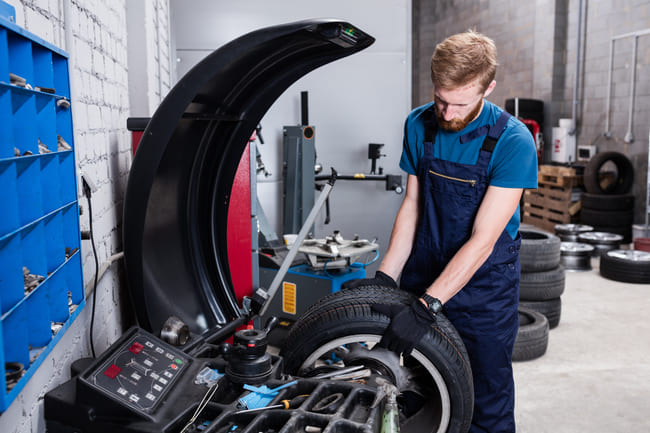Table of content
What is tyre balancing and why is it necessary
What is wheel balancing? Is it really necessary?
Often confused with wheel alignment, wheel balancing is a procedure that improves a car’s overall performance and ensures that the car drives smoothly. Unfortunately, not all wheel assemblies distribute weight evenly. Whether it's due to tyre wear, manufacturing imperfections or a loss of wheel weight, wheels that are not correctly balanced may wobble at high speeds or cause excessive vibration.
Tyres are rebalanced by adding weights to specific areas of the wheel, which is normally carried out at a car garage. Back in the day, tyre fitters would use ‘knock-on’ lead weights which were hammered onto the wheel rims. Nowadays, they prefer to use non-lead weights that can be stuck onto the rim as they are kinder to modern alloy wheels. But what does this do? Balancing the wheels on your car will not only extend the life of your tyres but it will also protect your car suspension parts from vibration related damage. It can also improve the vehicle’s fuel efficiency by preventing uneven tyre wear.
The difference between balancing tyres and wheel alignment
Balancing ensures that the weight is distributed equally on both sides of the axle and that the wheels spin evenly. Alignment, on the other hand, refers to the adjustment of the angles of the wheels, ensuring that they travel in the right direction and traction is maintained. Both of them should be carried out regularly as part of routine maintenance. Common signs of poor alignment and out of balance wheels may also indicate that the tyres are due for a replacement. You can easily buy cheap tyres online, allowing you to reduce maintenance costs without sacrificing quality.
How to balance a car wheel

People usually get their car wheels balanced by a professional tyre fitter or garage employee as it requires precise calculations and special machinery. Any areas of the wheel that are heavier or lighter than the rest have to be pinpointed and adjusted. The most convenient time to have the wheels checked or rebalanced may be when you go to have the tyres rotated.
The wheel balancing procedure is as follows:
Step 1. The tyre and wheel are placed on the tyre balancing machine.
Step 2. The machine spins the wheel, measuring the vibrations during rotation. This will indicate to the technician whether the weight is distributed evenly and, if not, where to attach the weights and how much weight to add.
Step 3. The technician should be able to correct imbalances by simply adding or adjusting existing weights. However, in some cases, the tyres will need to be remounted in a different position to balance the weight.
How much does it cost to balance wheels?
In the UK, professional wheel balancing typically costs around £5 - £10 per wheel, depending on the type of vehicle. Most garages will include this in the cost for wheel alignment services. On average the procedure takes around 45 minutes to complete, however, it can take as long as 2 hours for certain types of vehicles. It is generally recommended to book a wheel balancing appointment every 5,000 to 15,000 miles to avoid costly repairs and unnecessary replacements.
If you’ve got the right skills and equipment, you may be able to do this yourself at home. For the sake of accuracy and efficiency, it is advisable to only do this using a tyre balancer. Not only will this save you a lot of time and effort, but it will also give more precise results. If it turns out that the tyres need to be replaced, then you should check out our latest Michelin tyre offers.
Top products related to this topic:































